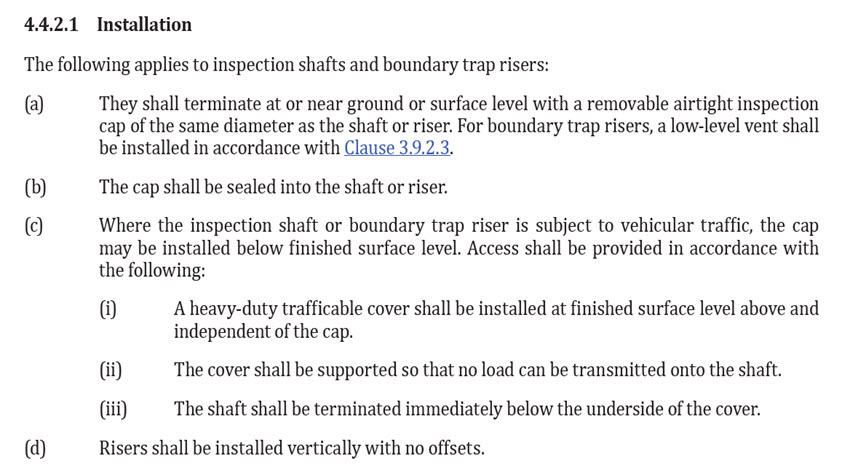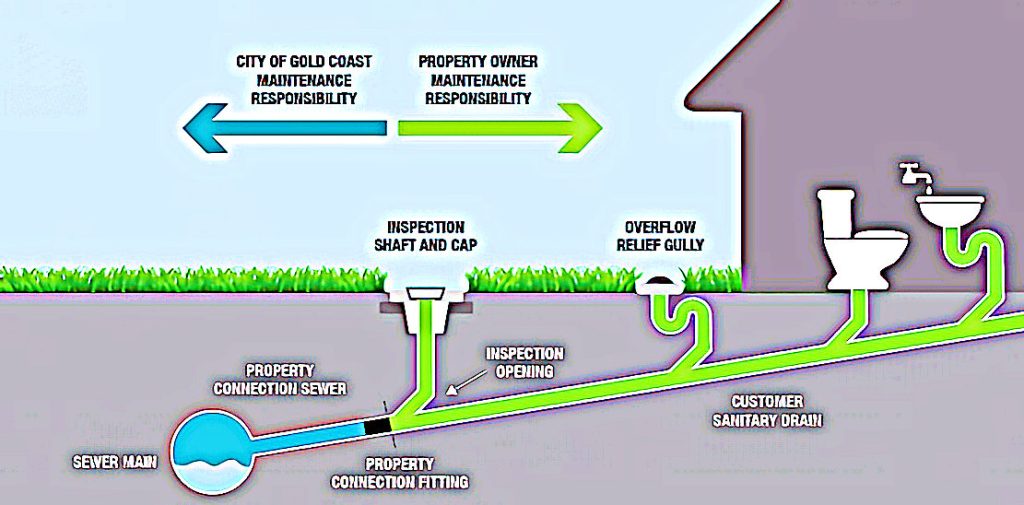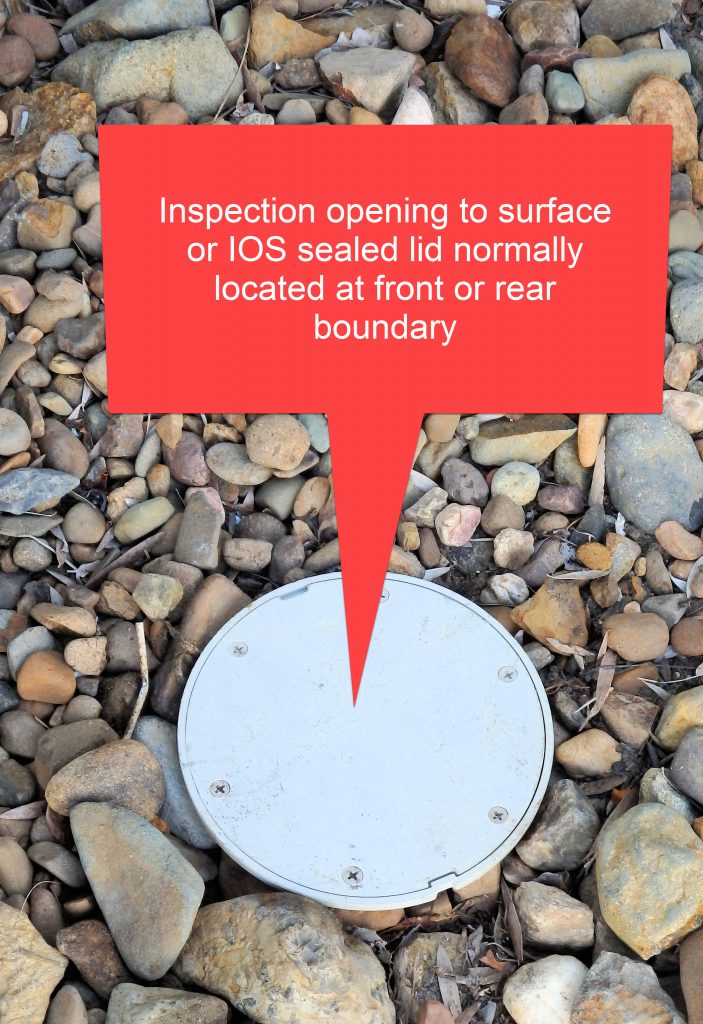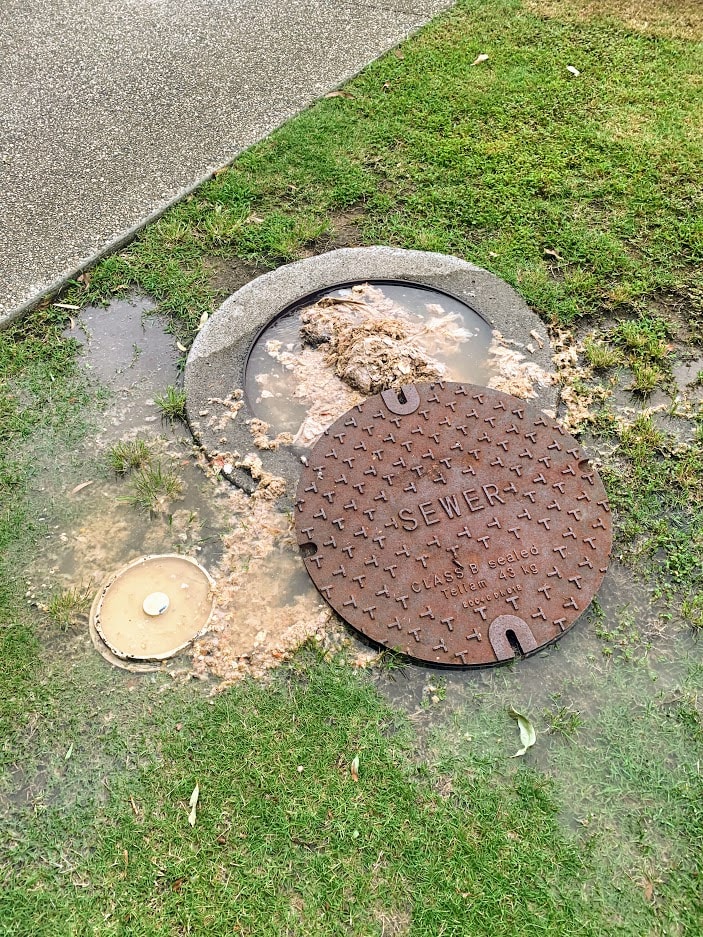How to Locate and Identify Your Sewer Inspection Opening with Ease
Inspection Openings (IO) and Inspection Openings to Surface (IOS) are vital components of your sewerage system. These access points allow easy entry to underground sewer pipes, enabling fast and efficient identification and resolution of blockages, ensuring your system runs smoothly.
Book a Sewer Inspection Opening Inspection
If you can’t find your sewer inspection opening to the surface (IOS) on your property or if it’s damaged, book a site inspection today.
Legal Requirements for Sewer Inspection Openings
Under the Plumbing & Drainage Act 2018, every property connected to a sewer must comply with clause 4.4 of AS/NZS 3500.2:2021. This clause mandates that each property have either:
✅ An inspection shaft, or
✅A boundary trap
These must be located where the property connects to the sewer system.
This regulation ensures properties have a defined access point for inspecting and maintaining the connection to the sewer, making it easier to identify and resolve issues such as blockages or leaks.
Complying with this requirement ensures a functional and legally compliant sewerage system and provides a practical solution for maintaining it.
What Is a Sewer Inspection Opening to Surface (IOS)?
The sewer inspection opening to surface (IOS) is vital to your home’s plumbing and sewer house drain system. It connects to a 100mm pipe shaft, which is a standard size for sewer pipes, that links your underground sewer pipe to the surface, providing a visual check to determine if sewage is present at that specific point.
Where Is the IOS Located?
Typically, the IOS is positioned at the front or back of your property, approximately two metres from your property boundary. This opening marks the connection between your home’s drainage system and the City of Gold Coast sewer network.
Who Is Responsible for Maintenance?
🚫💧City of Gold Coast: Maintaining sewer lines up to the connection point at the inspection opening (IO).
💷📊 Property Owner: Responsible for maintaining the pipes, fixtures, and the IOS from the connection point towards your property.
Keeping the IOS clear and accessible is crucial, as it ensures quick access for inspections and maintenance if sewer issues arise. Neglecting the maintenance of the IOS can lead to blockages, leaks, and other serious plumbing problems, which can be costly and disruptive.
Knowing the location of your IOS is not just a matter of information; it’s a source of empowerment. It equips you with the knowledge to effectively manage your home’s sewerage system and understand your responsibilities as a property owner. This knowledge gives you the confidence and control to ensure your sewer system is well-maintained and functioning properly.


Identifying Your Sewer Inspection Opening to Surface (IOS)
A sewer inspection opening (IOS) is a flat, round PVC cover, typically around 200mm in diameter, providing access to your sewer house drain. Most properties have multiple IOS covers, but the primary inspection opening is located at the boundary where your property connects to the sewer system.
Why an IOS Is Important
Having accessible sewer inspection openings is a game-changer, especially in the event of blocked drains. It’s like having a secret weapon that can be easily accessed when needed.
✅ Pinpoint Blockages: It helps determine whether a blockage is within your property or the council’s sewer system.
✅ Minimise Overflows: An IOS can reduce the risk of sewage overflows on your property.
✅ Having an IOS can be a financial Lifesaver. It eliminates the need for costly excavations to locate underground sewer inspection points, saving you from unexpected financial burdens.
Older Homes May Lack an IOS
Homes built before 1985 often lack a boundary inspection opening. Installing a compliant IOS can simplify future maintenance and save you money in the long run.
Who’s Responsible for the IOS?
It’s important to note that the City of Gold Coast does not handle:
🚫 Locating your IO or IOS.
🚫 Installing or upgrading an IOS.
🚫 Excavating to find an underground IO.
🚫 Raising an existing IO to ground level for an IOS.
The property owner is responsible for maintaining, locating, or upgrading your sewer inspection opening.
What to Do If You Don't Have a Sewer Inspection Opening (IOS)
If you can’t locate a sewer inspection opening to the surface (IOS) on your property or discover that it’s damaged, here’s how to address the issue:
1: Call Whywait Plumbing
📞 Contact us at (07) 5580 4311 for a professional site inspection. We can locate or repair your IOS and ensure it complies with plumbing regulations.
2: Request Sewerage Infrastructure Plans
When the IOS cannot be found, we request sewerage infrastructure plans from the relevant authority. These plans, which provide detailed information about your property’s sewer connection point, are crucial for our next steps.
3: Install a New Sewer Inspection Opening
We’ll use the sewerage plans to pinpoint the connection point and discuss options for installing a new sewer inspection opening to the surface (IOS). This will ensure your property complies with the Plumbing and Drainage Act 2018 and provides easy maintenance and blockage resolution access, making the process straightforward and hassle-free.
A properly installed IOS saves time, reduces future maintenance costs, and ensures your sewerage system is compliant and accessible, providing you with peace of mind about the condition of your property.
As a property owner, it’s your responsibility to ensure that your inspection shaft and sewer inspection opening to the surface (IOS) are always clear and accessible. This ensures that in the event of a blockage, Whywait Plumbing’s technicians can quickly and efficiently access the IOS, providing you with a swift resolution to any sewer issues.
Why Access to Your IOS Matters
When a sewer blockage occurs, you can trust the expertise of Whywait Plumbing’s technicians. They will locate and access the IOS as the first step in diagnosing and resolving the issue. The IOS provides vital access to your home’s sewer system, helping determine whether the problem lies within your property’s sewer lines or the City of Gold Coast’s sewer infrastructure.
Safety First: Do Not Open the IOS Yourself
Opening the IOS cover is not recommended for health and safety reasons unless you are a licensed professional. The IOS connects directly to the live sewer system, which poses risks if mishandled.
The IOS should only be opened when addressing blocked household sewer drains. This allows a licensed plumber to properly diagnose and repair the problem.
Legal Requirements for the IOS in Queensland
In Queensland, the Plumbing and Drainage Act 2018 enforces compliance with AS/NZS 3500.2:2021, which outlines requirements for inspection openings:
📊 Clause 4.7.4 (a) requires raising at least one inspection opening to the finished surface level on each main drain.
📊 Clause 4.7.4 (b): Inspection openings raised to surface level must have airtight removable caps, be protected by a cover, and be installed so that no traffic or structural loads are transmitted to the drain.
The IOS is not just a requirement; it’s there for your protection and peace of mind. It ensures compliance with plumbing standards and enables quick resolution of drainage issues, giving you one less thing to worry about as a property owner.


Gold Coast Sewer Blockages: Who’s Responsible and Who Pays?
Sewer blockages are a common issue on the Gold Coast, but the question of who is responsible and who pays for repairs often causes confusion for both property owners and plumbers.
While sewer blockages technically refer to obstructions in the sewer drainage system, the responsibility depends on whether the issue lies within the property’s sewer infrastructure or the City of Gold Coast’s sewer mains.
Clear Responsibilities Defined
Fortunately, the responsibilities are straightforward when broken down:
⚖️ Property Owners’ Responsibilities:
✅ Maintain and repair their sanitary drains and house sewer pipes.
✅ Cover all costs for blockages found in their system, including installing an inspection shaft (if required).
📜 The City of Gold Coast’s Responsibilities:
💸 Maintain and repair sewer mains and junctions that connect to the property’s sewer house drains.
💸 Fix blockages found in the public sewer mains.
Why the Confusion?
Confusing situations often arise due to varying interpretations and rule changes by council officers. However, the division of responsibilities is ultimately clear: property owners handle what’s on their property, while the City manages the public sewer system.
For an unambiguous breakdown, refer to the diagram below, which visually defines who is responsible for which sections of the sewer infrastructure.


We have a PLUMBER NEAR YOU 24 Hours, 7 Days a week
Servicing Gold Coast, Tweed & Tamborine.
We answer your call 24/7. You won’t get a call centre or an answering service when you call us. Speak to a plumber 24/7.
Trustindex verifies that the original source of the review is Google. We couldn’t have been happier, prompt service and great advice . I can highly recommend them !Trustindex verifies that the original source of the review is Google. From the initial contact to the plumbers getting out on site the whole process to fix a leak on the propoerty side of the water meter was A plus. Gary was brilliant in answering the multitude of questions via email I sent before we got the visit locked in. Lachy and Ben arrived on site exactly when we were told they would and identified the location of the leak and had it fixed super fast. They even answered questions for me about other works I wanted done to the house so will be reaching out again in the very near future to get the guttering on the whole house replaced. Highly recommend the team!Trustindex verifies that the original source of the review is Google. It is a nice change to deal with a trade group that charges fairly, turns up when they’re supposed to and provides good advice and high quality workmanship. We had a new filter tap, replacement Insinkerator and replacement gas cooktop supplied and installed and we're very happy with the products and the installation. I would have no hesitation in recommending Whywait for your plumbing/gas fitting requirements.Trustindex verifies that the original source of the review is Google. I cannot fault the service provided by Gary from Whywait Plumbing Services. He responded early on a Sunday morning to an urgent request to fix a broken tap (which turned out to be quite a complicated repair job) and worked on it until it was completely fixed. I'm extremely grateful for Gary's professionalism and expertise and wouldn't consider calling anyone else. Thank you, Gary!!Trustindex verifies that the original source of the review is Google. Good friendly service, did a great job thanksTrustindex verifies that the original source of the review is Google. Gary from Why Wait Plumbing completed my Water Efficiency Certificate. From the booking to the completion of the service I was very happy with everything that was provided. I was kept up to date via email and phone. And have them booked out again at our new home to install fridge plumbing. I would not hesitate in referring Why Wait Plumbing. Gary was so friendly and efficient! Thanks Again! And see you next week! ✌🏽
Queensland QBCC Plumbing Licence 78167
New South Wales DFT Plumbing Licence 226900C







